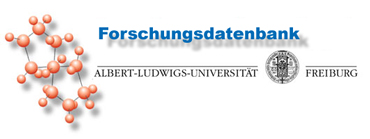| [Zurück zum Forschungsbericht] |
 |

Development of subsurface parameterization focusing on hardrock aquifers -regional-to-large sale hydrological simulations.
Projektbeschreibung:Background Over the coming decades water demand are set to increase rapidly for Africa, primarily driven by population growth and increased by drier climate conditions. Increasing reliable fresh water supplies in Africa will depend on the development of groundwater. To ensure sustainable water use and avoid overexploitation improved knowledge of the groundwater resource is needed. In particular improved knowledge is needed for hardrock aquifers with thick regolith layers, covering 44% of Africa. The main goal of this research is to improve current global scale dataset of hydrogeological information by including local-to-regional information of, for example, aquifer permeability and aquifer thickness. This new dataset will be used in a global-scale groundwater flow model and will result in improved estimates of groundwater storage, well yields, and groundwater-surface water interactions and allows us to study effect of storage changes, be it from climate change or human water abstractions. This is important information for water managers to ensure sustainable water use. We specifically focus on mapping the sediment and hardrock aquifers for Africa. Research questions The following research questions (RQ) are formulated: RQ1: Improve current available large-scale subsurface parameterization by using local-scale available relevant data. A particular focus lies on alluvial deposits and regolith layers. This will result in a new continental-scale estimate of thickness and permeability at high resolution (10km2 to 1km2) for Africa. RQ2: Evaluate the new parameterization hydrologically. This involves hydrological modelling using two models: 1) the global-scale groundwater model PCR-GLOBWB-MODFLOW (van Beek et al., 2011; de Graaf et al., 2015) and 2) the physically based fully integrated catchment-scale model PARFLOW (Maxwell et al., 2016). Both models will be run over a larger domain (West-Africa) for a steady-state (i.e. static climatic forcing) and transient (i.e. dynamic climatic forcing) at approximately 10km2 spatial resolution. Model outcomes include groundwater heads and river discharges and will be evaluated against observed data (provided by the French partner). RQ3: Compare model outcomes of PCR-GLOBWB-MODFLOW and PARFLOW (run over the larger domain) and evaluate differences. This prepares for future work following from hyper-resolution modelling (i.e. < 100m2); the sheer ambition of the hydrological community. This work includes for example; replacing sub-grid concepts by demanding (in terms of computational demands, storage requirements and parameters) physical process representations, reducing process- and parameter uncertainty and solving computational issues.Projektlaufzeit:
Ansprechpartner: Graaf I
Projektbeginn: 2018Projektleitung:
Projektende: (unbegrenzt)
Graaf I
Albert-Ludwigs-Universität Freiburg
Institut für Geo- und Umweltnaturwissenschaften
Professur für Umwelthydrosysteme
Außenstelle "Blauer Container", Stefan-Meier-Straße 31a
Freiburg
Telefon: 203-3532
Fax: 203-3594
Email: kerstin.stahl@hydro.uni-freiburg.de
https://www.hydro.uni-freiburg.de/mitarbeiter/stahl
Mitarbeiter:
- Graaf I
Dr. Basile Hector, Researcher at Institude de Recharge pour le Développement (IRD), France.Finanzierung:
- DAAD - PPP, Stiftung
Aktueller Forschungsbericht